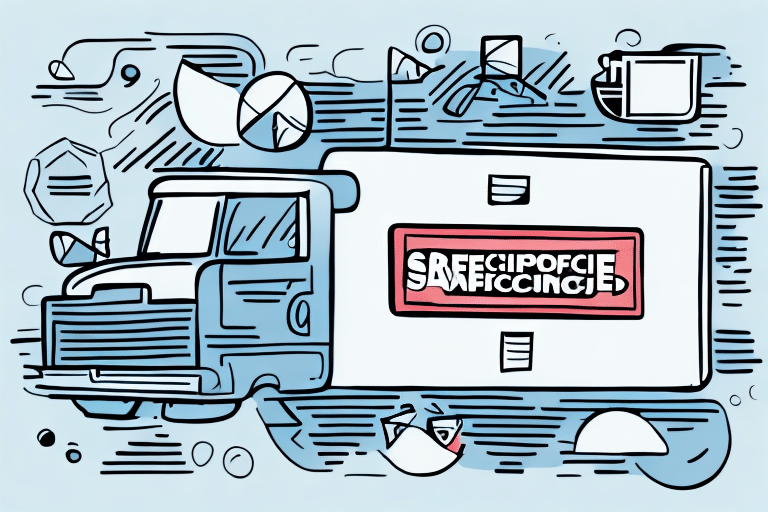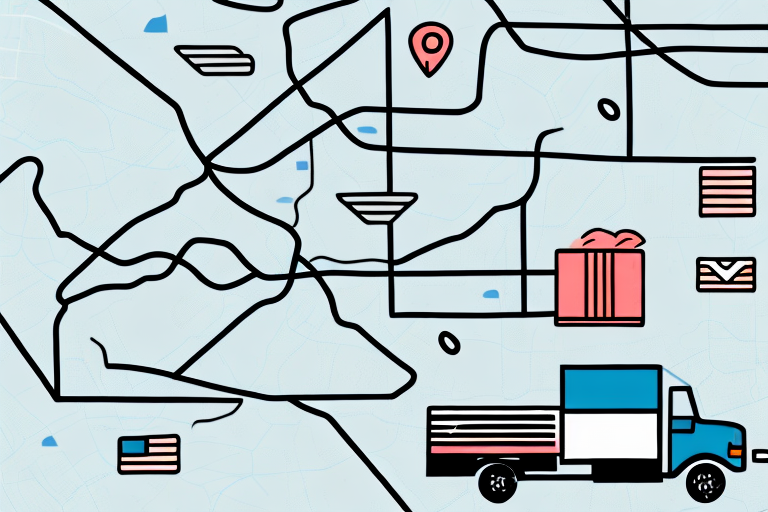How to Safely Ship a Large Package
Sending a large package can be a daunting task, especially if you don't have much experience with shipping. There are numerous factors to consider when shipping a package, such as regulations, packaging materials, labeling, and tracking. Additionally, it's important to ensure that the package arrives at its destination safely and on time, without any damages or losses. In this comprehensive guide, we'll walk you through all the steps involved in shipping a large package safely and successfully.
Understanding Shipping Regulations and Requirements
Before you start the shipping process, it’s crucial to understand the shipping regulations and requirements for large packages. Depending on the size, weight, and contents of your package, there may be restrictions on the type of shipping service you can use. For example, some carriers may not accept packages over a certain weight or size, or may require special handling for hazardous materials or fragile items. Make sure to research and comply with all local, national, and international regulations to avoid any legal issues or delays in shipping. Refer to resources like the United States Postal Service guidelines for detailed regulations.
Local, National, and International Regulations
Shipping regulations can vary significantly based on the destination of your package. For domestic shipments, familiarize yourself with the carrier-specific guidelines, while international shipments require adherence to customs laws and import regulations of the destination country. The U.S. Customs and Border Protection provides comprehensive information on international shipping requirements.
Restrictions Based on Size, Weight, and Contents
Carriers often have specific limits on the size and weight of packages. Additionally, certain items may be restricted or require special handling. For instance, hazardous materials like batteries or chemicals have stringent packaging and labeling requirements. Always check the FedEx Dangerous Goods Shipping Guidelines before preparing your package.
Selecting the Right Shipping Service
Choosing the right shipping service for your large package is crucial to ensure that it arrives on time and in good condition. Consider factors such as cost, delivery speed, tracking capabilities, insurance options, and customer service when selecting a shipping carrier. Comparing different carriers and services can help you find the best fit for your specific needs. Utilize tools like shipping calculators or consult with shipping experts to determine the most cost-effective and reliable shipping method for your package.
Comparing Carriers and Services
Different carriers offer varying services tailored to different shipping needs. For example, UPS, FedEx, and USPS provide a range of options for large package shipments. Compare their rates, delivery times, and additional services to make an informed decision.
Cost, Delivery Speed, Tracking, and Insurance
Evaluate the balance between cost and delivery speed based on your urgency. Ensure the carrier offers robust tracking capabilities to monitor your package's progress. Insurance options are essential for protecting high-value or fragile items against potential damages or losses during transit. According to the Statista report, carrier market shares and service performance can influence your choice.
Packaging Large Items Securely
The packaging materials you use for shipping a large package play a critical role in protecting the contents during transit. You'll need sturdy boxes, padding materials such as bubble wrap or foam, packing tape, and labels or markers for identification. It's important to use high-quality materials that can withstand the bumps and jolts of shipping. If you're unsure about the right packaging materials to use, consult with a shipping specialist or refer to the carrier's guidelines and recommendations.
Choosing Appropriate Packaging Materials
Select boxes that are strong and durable, preferably double-walled for added protection. Use cushioning materials like bubble wrap, foam inserts, or packing peanuts to fill any empty spaces and prevent movement inside the box. According to industry standards, proper cushioning can reduce the risk of damage by up to 70% during shipping.
Proper Packing Techniques
When packing, place heavier items at the bottom and lighter items on top to maintain balance. Secure all items with packing tape, ensuring all seams are covered to reinforce the box's strength. For fragile items such as glassware or electronics, wrap each item individually and use multiple layers of padding. The Electronic Code of Federal Regulations provides detailed packing instructions for hazardous materials.
Labeling and Marking Your Package
Clearly label your package with the recipient’s address and contact information, as well as your own return address. Use clear, legible fonts and consider including a printed shipping label to ensure accuracy. For international shipments, include all necessary customs documentation and mark the package with handling instructions such as "Fragile" or "This Side Up" to guide the handlers.
Insurance and Tracking Options
Insurance is an important consideration when shipping high-value or fragile items. Most carriers offer various insurance options and coverage levels to protect your package from damages or losses during transit. Tracking your package provides peace of mind and allows you to monitor its progress in real-time. Here’s how to effectively manage insurance and tracking:
Understanding Insurance Choices
Review the carrier's insurance policies to understand what is covered and the maximum coverage limits. For high-value items, you may need to purchase additional insurance. External insurance providers can offer specialized coverage beyond what standard carriers provide.
Tracking Your Package Effectively
Utilize the tracking tools provided by your carrier to stay informed about your package's status. Most carriers offer online portals or mobile apps where you can enter your tracking number to view updates. According to a study by Business Insider, packages with tracking have a 30% higher customer satisfaction rate.
Avoiding Common Shipping Mistakes
Shipping a large item can be complicated, and there are several common mistakes that can result in delays, damages, or additional fees. Avoid these pitfalls to ensure a smooth shipping experience:
- Insufficient Packaging: Using inadequate packing materials can lead to damages during transit.
- Incorrect Labeling: Mislabeling can cause your package to be delivered to the wrong address or held up in customs.
- Incomplete or Inaccurate Customs Forms: For international shipments, missing or incorrect customs documentation can result in delays and fines.
- Using the Wrong Shipping Service: Choosing a service that doesn't meet your delivery needs can lead to dissatisfaction.
- Ignoring Shipping Regulations: Non-compliance with shipping laws can cause legal issues and shipment rejections.
Cost-Saving Strategies for Shipping Large Packages
Shipping a large package can be expensive, but there are several strategies you can use to save money on shipping costs:
Choosing Regional Carriers
Regional or local carriers often offer more competitive rates for oversized or heavy packages compared to national carriers. Research local shipping companies that specialize in large item shipments to find cost-effective options.
Bulk Shipping Discounts
If you're shipping multiple packages, inquire about bulk shipping rates or discounts. Many carriers offer reduced rates for high-volume shippers, which can significantly lower your overall shipping costs.
Accurate Measurement and Weight
Accurately measuring and weighing your package is essential to avoid unexpected fees. Use a reliable scale and measurement tool to ensure that you're billed correctly for the size and weight of your shipment.
International Shipping Considerations
Shipping a large package internationally requires additional considerations compared to domestic shipping. You'll need to comply with all customs regulations and requirements, such as providing accurate customs forms and documentation, declaring the value and contents of the package, and paying any applicable taxes or fees. Additionally, shipping times and methods may vary, so careful planning is essential.
Customs Regulations and Documentation
Each country has its own import regulations and required documentation. Ensure that you fill out customs forms accurately and include detailed descriptions of the contents. The U.S. Customs Manual is a valuable resource for understanding international shipping requirements.
Choosing the Right International Carrier
Select a carrier with a strong international presence and reliable tracking systems. Carriers like DHL and FedEx International Shipping specialize in global logistics and can provide tailored solutions for large international shipments.
Managing Shipping Issues
Despite your best efforts, there may be instances where your package is delayed or lost during transit. Handling these issues promptly can help mitigate frustrations and potential losses.
Dealing with Delivery Delays
If your package is delayed, contact the carrier's customer support team to inquire about the status. Staying informed helps you manage expectations and communicate updates to the recipient. Most carriers have dedicated teams to handle delayed shipments efficiently.
Handling Lost or Damaged Items
In the event of a lost or damaged package, file a claim with the carrier as soon as possible. Provide all necessary documentation, including tracking information and evidence of damages. Quick action increases the likelihood of a successful resolution. Refer to the UPS Claims Process for detailed instructions.
Best Practices for Receiving and Unpacking
Once your package arrives at its destination, it's important to handle it carefully to avoid damages or injuries. Follow these best practices to ensure a smooth receiving and unpacking process:
- Inspect the Package: Check for any visible damages to the packaging before opening.
- Document Issues: If there are damages or missing items, document them with photographs or written descriptions immediately.
- Careful Unpacking: Use appropriate tools to open the package and handle contents with care, especially if they are heavy or fragile.
- Follow Instructions: Adhere to any specific instructions provided by the sender regarding handling or assembly of the items.
Properly handling and inspecting your package upon arrival can prevent further issues and ensure that any problems are addressed promptly.
Conclusion
By following these guidelines and best practices, you can ensure that your large package arrives safely and on time, without any damages or unexpected fees. Take the time to properly prepare and package your item, select the appropriate shipping service and insurance coverage, and monitor the package's progress during transit. With a little patience and attention to detail, you can successfully ship large items anywhere in the world.








